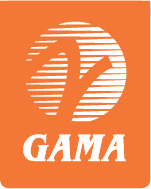|
Associations Praise Update to Product Certification Guide
Washington, DC – The Aircraft Electronics Association (AEA), Aerospace Industries Association (AIA) and the General Aviation Manufacturers Association (GAMA) today announced the approval of an updated United States (U.S.) Federal Aviation Administration (FAA)/Industry Guide to Product Certification. The last version of the guide was published in 2004.
The updated guide will help institutionalize best practices and a new operating norm for FAA, companies and applicants that will prove to be foundational in reaching the next level of safety and certification process effectiveness and efficiency. It incorporates changes based on lessons learned and the most recently published FAA policy guidance. The guide also establishes principles and guidance for how an applicant and the FAA can transition to a state where there is progressively less direct involvement of the FAA in detailed compliance activities, increasing the efficiency of the process while maintaining the same high-level of safety.
“Since the FAA and Industry Guide to Avionics Approvals was first published April 13, 2001, much has changed in the agency, the industry and the products,” said AEA President Paula Derks. “Now on its third revision, this update leverages risk-based decision-making and organizational maturity as it modernizes the processes to better facilitate the needs of aviation. This Product Certification Improvement Guide is an excellent example of industry and the FAA working together to streamline processes and maximize efficiencies in certification.”
There have been significant changes in the certification processes over the last 10-to-15 years that improve the efficiency and effectiveness of the certification and design approval processes and enhance product safety. The revised guide addresses the impact of those changes and assists the stakeholders in taking full advantage of the benefits they offer.
“Clarifying the roles and responsibilities of industry and FAA oversight offices and facilitating a shift to a systems approach to product certification and safety oversight was a recommendation of the FAA Aircraft Certification Process Review and Reform report to Congress and the Part 21 / Safety Management Systems Aviation Rulemaking Committee,” said GAMA President and CEO Pete Bunce. “We’re proud to work with the FAA and industry to update this guide, and help implement these improvements to ensure the certification process becomes more efficient and consistent, while keeping safety as the number one priority.”
The revised guide introduces some significant changes to the Partnership For Safety Plan (PSP), a written agreement to define a working relationship between an applicant for a product certification or approval and the applicable organizations of the FAA. The PSP will now provide high-level guidance when the FAA and applicant have reached agreement on how they will conduct business, instead of providing specific details on how the parties will work together on specific issues, creating a more efficient, more consistent process.
“This is an outstanding example of how government and industry can work together to reach a win-win outcome,” said AIA President and CEO David F. Melcher. “The joint team of experts has outlined what it would take to conduct a timely and successful certification project and we are committed to work with the FAA and industry partners during the implementation phase.”
A group comprised of representatives from nearly 15 organizations worked over 18 months to improve the guide and produce the third edition of it. The organizations are: AEA, AIA, ALOFT AeroArchitects, Bell Helicopter, FAA, GAMA, Garmin, GE Aviation, Gulfstream Aerospace, Honeywell Aerospace, ICX Consulting, Textron Aviation and The Boeing Company. AEA, AIA, GAMA and FAA sponsored the guide.
View the updated guide.
For additional information, please contact Sarah McCann, GAMA Director of Communications, at +1 (202) 637-1375 or smccann@gama.aero; Geoff Hill, AEA Director of Communications at (816) 347-8400 or geoffh@aea.net; or Dan Stohr, AIA Director of Communications at (703) 358-1078, (703) 517-8173 or dan.stohr@aia-aerospace.org.
GAMA is an international trade association representing over 100 of the world’s leading manufacturers of general aviation airplanes and rotorcraft, engines, avionics, components and related services. GAMA’s members also operate repair stations, fixed based operations, pilot and maintenance training facilities and manage fleets of aircraft. For more information, visit GAMA’s website at www.GAMA.aero.
|

